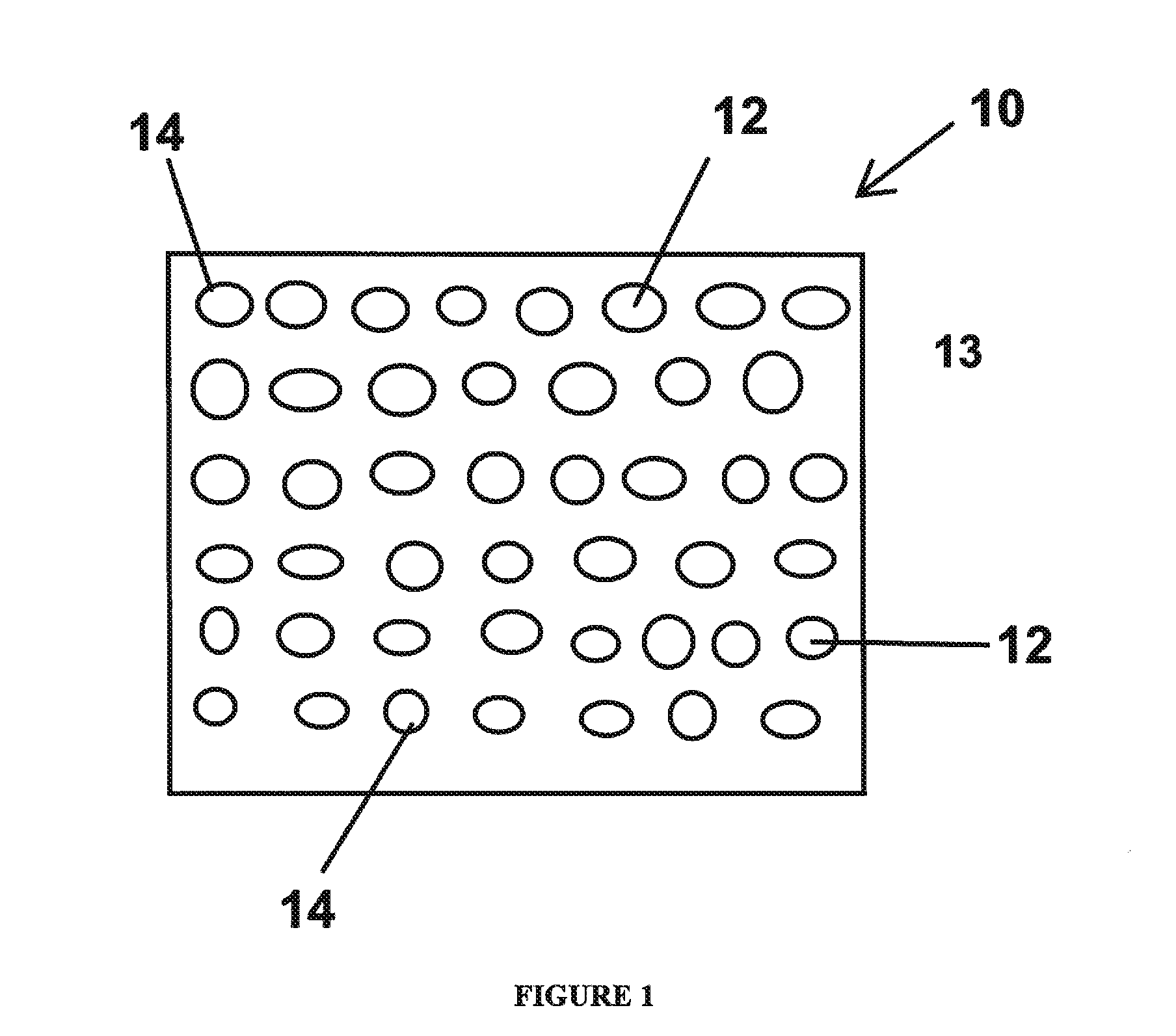Process for making an embossed web
- Summary
- Abstract
- Description
- Claims
- Application Information
AI Technical Summary
Problems solved by technology
Method used
Image
Examples
example 1
[0101]Embossed webs are produced using a static gas pressure plenum and a forming structure 10 having about 1550 apertures per square centimeter (about 10,000 apertures per square inch, 100 mesh metallic apertured plate). The forming structure is made of metal and has a thickness of about 1 mm. The apertures have a circular cross-section with a diameter of about 180 microns and a center-to-center spacing of about 250 microns. The sidewalls of the apertures are straight. As illustrated in FIG. 7, the apertures are offset relative to adjacent apertures.
[0102]The precursor web 34 utilized is a polyethylene film obtained from RKW US, Inc. that is about 15 microns thick and has a basis weight of 14.2 grams per square meter (“gsm”).
[0103]The embossing process is performed using a high speed research press with the forming structure preheated to a temperature of about 110° C. The high speed research press is described in detail in U.S. Patent Publication No. 2009 / 0120308, and is designed t...
example 2
[0104]Embossed webs are produced using a static gas pressure plenum and a forming structure 10 having about 1550 apertures per square centimeter (about 10,000 apertures per square inch, 100 mesh metallic apertured plate). The forming structure is made of metal and has a thickness of about 1 mm. The apertures have a circular cross-section with a diameter of about 180 microns and a center-to-center spacing of about 250 microns. The sidewalls of the apertures are straight. As illustrated in FIG. 7, the apertures are offset relative to adjacent apertures.
[0105]The precursor web 34 utilized is a polyethylene film obtained from RKW US, Inc. that is about 15 microns thick and has a basis weight of 14.2 grams per square meter (“gsm”).
[0106]The embossing process is performed using a high speed research press, as described in Example 1. The press is operated to simulate a forming structure roll diameter of 205 mm. The forming structure is preheated to a temperature of about 90° C. The precurs...
PUM
| Property | Measurement | Unit |
|---|---|---|
| Temperature | aaaaa | aaaaa |
| Temperature | aaaaa | aaaaa |
| Length | aaaaa | aaaaa |
Abstract
Description
Claims
Application Information
 Login to View More
Login to View More - R&D
- Intellectual Property
- Life Sciences
- Materials
- Tech Scout
- Unparalleled Data Quality
- Higher Quality Content
- 60% Fewer Hallucinations
Browse by: Latest US Patents, China's latest patents, Technical Efficacy Thesaurus, Application Domain, Technology Topic, Popular Technical Reports.
© 2025 PatSnap. All rights reserved.Legal|Privacy policy|Modern Slavery Act Transparency Statement|Sitemap|About US| Contact US: help@patsnap.com



